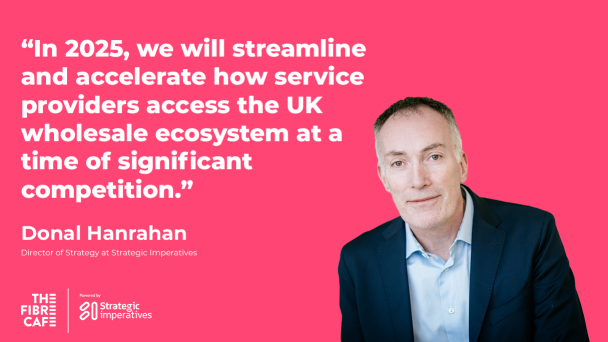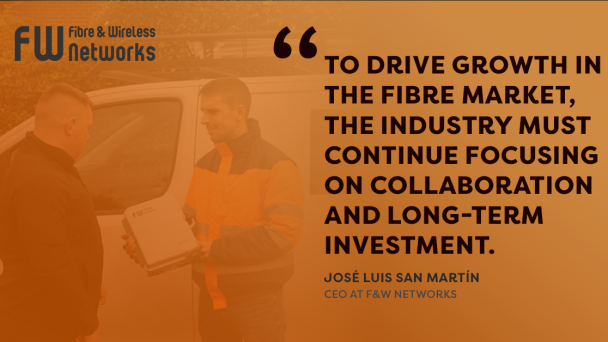Access is critical to empowering service provider success, according to Donal Hanrahan, Director of Strategy at Strategic Imperatives. Here he discusses his plans and priorities to ensure The Fibre Café, its cloud based, API-driven integration platform, continues to catalyse competition and drive positive outcomes.

Oliver Helm leads a bigger, more ambitious FullFibre following the altnet’s merger with fellow Basalt-backed Digital Infrastructure.
Helm’s short-term priority is to combine the two networks, with a joint footprint of 270,000 live premises, and create a single wholesale platform available for ISPs to sell on from Q4 this year. “Combining networks brings huge competitive advantages for us,” said Helm. “The greater footprint scale means we’ll have significantly better routes to market for our partner ISPs.”
Currently adding 40,000 new premises per month to its network, and with 67 towns actively in build or nearing completion, Helm is also ramping up FullFibre’s ambitions to deliver 500,000 live premises by the end of 2025 to one million. This will predominantly target more rural build locations that join FullFibre’s existing footprint rural towns and villages. Part of the altnet’s ethos has always been to lessen the digital divide by addressing typically digitally underserved areas.
Urban coverage will come from the addition of Digital Infrastructure’s footprint. The two networks have no UPRN overlap. Helm said: “Our wholesale footprints are highly complementary. So, there’s no crossover, only a large contiguous footprint for ISPs to sell on.”
As well as combining physical footprints, the merger provides the opportunity for Helm to blend best practices and efficiencies from both teams. He acknowledges that this process will not be completed overnight. “Any merger comes with inherent challenges, especially so when it comes to reinforcing the people aspects. The rest is highly technical but can be managed well with planning.
“I know we can bring these teams together to create something truly high-performing, but the task is around how we get there. We are working hard on this, and we have all the right people to enable us to deliver this well.”
In the longer term, this will help Helm put a sharper focus on continuing the company’s trajectory towards an EBITDA-positive business. He will focus on using the larger network to continue attracting and offering value to communications providers to drive penetration.
As the third major PE-led merger in the fibre sector this year, the deal proves that the starting gun has been fired for consolidation in the fibre sector. With over 100 altnets in the market at the start of this year, 2023 looked like a year that would see rationalisation and the rise in interest rates increased the need for this process to happen sooner rather than later.
Helm adds: “It’s the only rational move for the market - whether that’s through opportunity or necessity. We are lucky to be able to do this out of opportunity rather than need because it’s a good strategic move for both businesses.”
Helm also sees rationality in the long-term future for alternative networks as wholesale assets. He said: "That’s the route to higher penetration and business that generates returns: building high-quality, sustainable networks is what altnets are good at and an ISP’s focus on front-line customer service and acquisitions is a different speciality."




